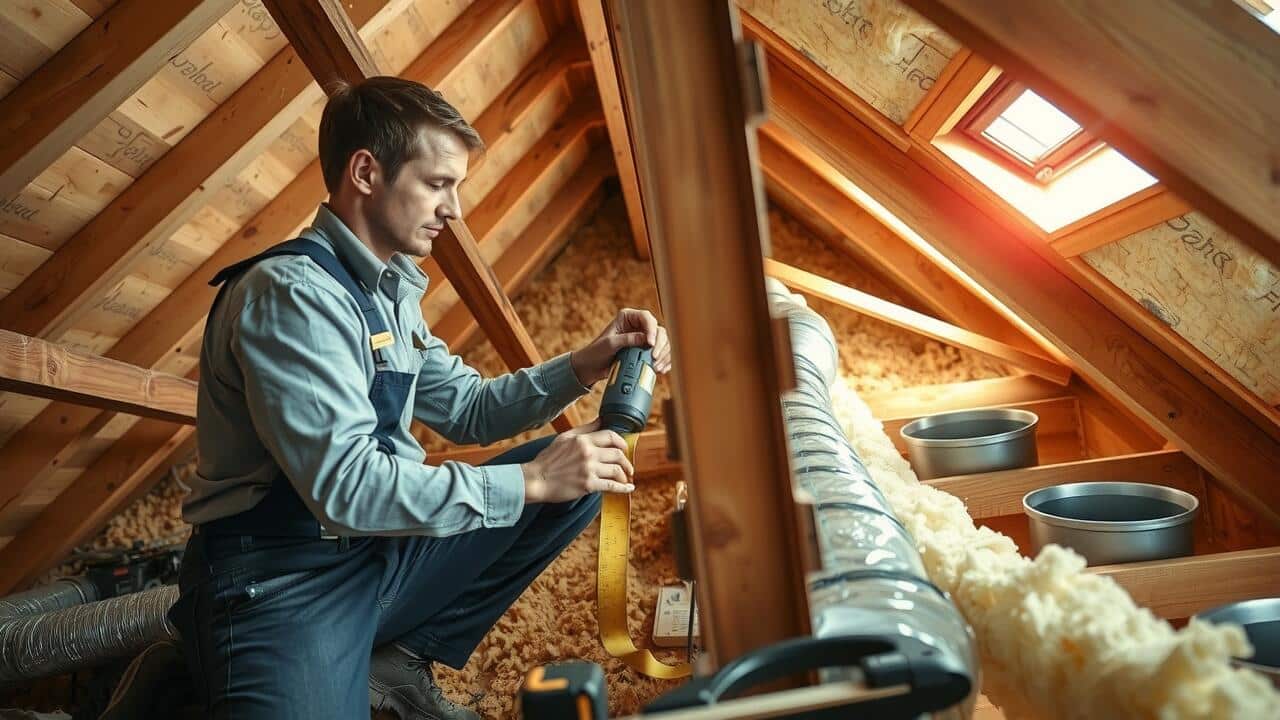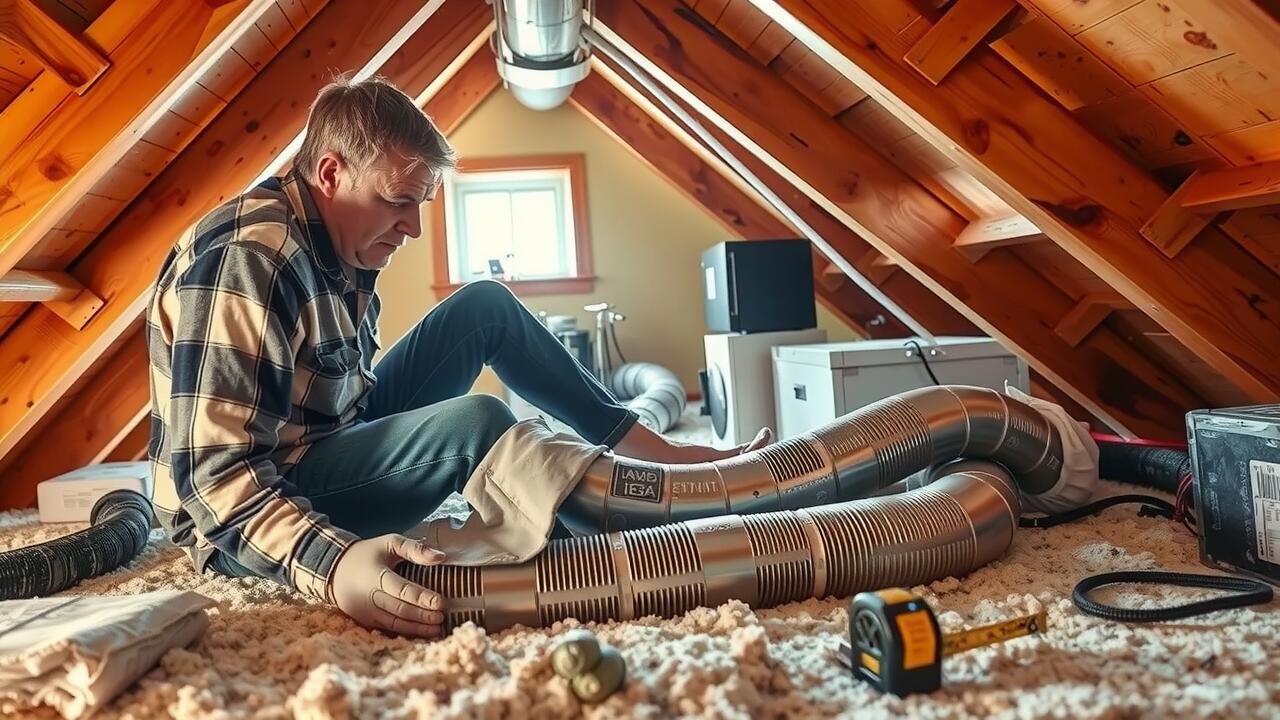
Table Of Contents
DIY vs. Professional Duct Insulation
Taking on the task of insulating ductwork can be a satisfying DIY project for those with the right skills and tools. It offers a chance to save money while enhancing energy efficiency at home. However, this project requires careful planning and execution. Missteps can lead to issues such as inadequate insulation or improper sealing, which can negate the benefits entirely. Homeowners interested in Air Duct Insulation in Dignowity Hill, San Antonio, should assess their capability to execute the work effectively.
On the other hand, hiring a professional for duct insulation might be a preferable choice for those uncertain about handling the project themselves. Professionals bring expertise that ensures the insulation is installed correctly and efficiently. They are familiar with local building codes and best practices, reducing the likelihood of future problems. For residents seeking Air Duct Insulation in Dignowity Hill, San Antonio, a qualified contractor can offer tailored solutions that maximize comfort and energy savings without the hassle of DIY.
Assessing Your Skill Level and Tools
Before embarking on a duct insulation project, it is essential to honestly assess your skill level and the tools at your disposal. If you have prior experience with home improvement projects, you may feel confident tackling insulation on your own. However, if you find yourself unfamiliar with the intricacies of ductwork, hiring a professional may be the wiser choice. Ensuring that you have the right tools, such as scissors for cutting insulation, duct tape for securing it, and a measuring tape for precise measurements, can significantly impact the quality of your work.
When considering Air Duct Insulation in Arsenal, San Antonio, understanding the scope of the project is crucial. Evaluate whether your home’s ductwork is easily accessible and how much time you can realistically dedicate. If the task seems overwhelming, remember that professionals specialize in this field and can provide a level of expertise that may save you effort and potential mistakes in the long run. Making a careful assessment can help you decide the best approach for effective duct insulation.
Insulation Installation Process
Proper installation of duct insulation is crucial for maximizing energy efficiency. Before starting, ensure you have the right materials and tools. Common options for insulation include fiberglass and foam. Measure the length of the ductwork to determine how much insulation is needed. Cut the insulation material to size, making sure to maintain a snug fit around the ducts. Any gaps can reduce the effectiveness of the insulation, so careful attention to detail is necessary.
Once the insulation is cut, wrap it around the ductwork securely. Use insulation tape or straps to hold it in place, ensuring that the material adheres properly. Sealing joints and seams is an essential step to prevent air leaks. For those living in areas like King William, San Antonio, hiring professionals may provide added peace of mind. They can ensure that Air Duct Insulation in King William, San Antonio, is done correctly, avoiding common pitfalls that could compromise insulation integrity.
Step-by-Step Guide to Proper Insulation
Begin by assessing the ductwork that requires insulation. Look for any gaps, holes, or rust that may affect its efficiency. Prepare the area by cleaning the ducts and ensuring all surfaces are dry. Measure the dimensions of each duct section to determine how much insulation material you will need. Purchase a high-quality insulation product suitable for your needs. Fiberglass or foam board insulation are common choices for this type of project.
Next, cut the insulation to fit the measured sections of ductwork. Use a utility knife for precise cuts. Carefully wrap each duct, ensuring there are no exposed areas. Secure the insulation in place with insulation tape or metal straps to prevent it from shifting. Pay special attention to joints and connections, as these areas are often susceptible to air leaks. Completing these steps effectively enhances energy efficiency and maintains the desired temperature in the system, making Air Duct Insulation in Wetmore, San Antonio a worthwhile investment.
Potential Drawbacks of Duct Insulation
While duct insulation can greatly improve energy efficiency, it is not without potential drawbacks. A primary concern is moisture accumulation within the insulation material. Poorly installed or damaged insulation may trap humidity, creating an environment that fosters mold growth. This can compromise indoor air quality and lead to health issues for occupants.
Another aspect to consider is the cost-effectiveness of insulation materials and installation. Some homeowners may find that the expense does not justify the energy savings, especially in milder climates where heating and cooling demands are lower. Researching local service providers like Air Duct Insulation in Arsenal, San Antonio, can help assess whether the investment is worthwhile in your specific situation.
Risk of Moisture and Mold Growth
Wrapping ductwork in insulation can significantly enhance energy efficiency, but it also introduces potential risks, particularly regarding moisture retention. Insulation can create a barrier that traps humidity, especially in areas with high moisture levels. If not properly installed or monitored, this moisture can foster an environment conducive to mold growth. Mold spores thrive in damp conditions, making insulated ducts a potential breeding ground if there is insufficient ventilation or drainage.
In Dignowity Hill, San Antonio, the combination of warm temperatures and humidity creates additional challenges for maintaining drywall integrity and indoor air quality. Homeowners must ensure that the insulation is compatible with local climate conditions to mitigate these risks. Regular inspections of the ductwork are essential to catch any signs of excessive moisture before they lead to mold problems, ensuring that the benefits of insulation do not come at the cost of home health.
FAQS
What is the primary benefit of insulating ductwork?
The primary benefit of insulating ductwork is improved energy efficiency. Insulation helps maintain the temperature of the air traveling through the ducts, reducing energy loss and lowering heating and cooling costs.
Can I insulate my ductwork myself?
Yes, you can insulate your ductwork yourself if you have the right tools and skills. However, it is essential to assess your skill level and ensure you follow safety guidelines and installation procedures.
What are the steps involved in insulating ductwork?
The insulation installation process generally involves cleaning the duct surfaces, measuring and cutting insulation material to the correct size, securing the insulation around the ducts, and sealing any seams or openings to prevent air leaks.
Are there any drawbacks to insulating ductwork?
Yes, potential drawbacks include the risk of moisture and mold growth if insulation is not installed correctly or if ducts are located in areas with high humidity. Proper sealing and material selection can help mitigate these risks.
How do I know if my ductwork needs insulation?
If you notice inconsistent temperatures in your home, high energy bills, or if your ducts are located in unconditioned spaces such as attics or crawl spaces, it may indicate that your ductwork needs insulation. A professional assessment can provide further guidance.


